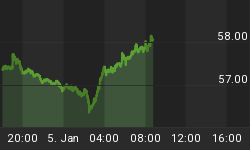In a stark departure from tradition whereby American presidents refrained from talking about the value of the American dollar in order to avoid shaking up global markets, the 45th president of the United States regularly tweeted that he wanted the USD on the weaker side. Former president Donald Trump was blunt when asked by a WSJ reporter why he wanted the American currency to weaken: “Our companies can’t compete with [China] now because our currency is too strong. And it’s killing us.”
Trump might have left office more than a year ago, but he’s still to get his wish: the U.S. dollar has continued to soar against its major rivals and even hitting multi-year highs.
The ICE Dollar Index (DXY), which measures the U.S. dollar against major rivals, has climbed 15% so far this year to 103.65, the highest since January 2017, according to FactSet.
The dollar has gained the most against the Japanese Yen: the Japanese currency has lost nearly 20% against the greenback over the past year after crashing to levels not seen in more than two decades as the Bank of Japan vows to continue a dovish stance and pledged unlimited bond buying. The Bank of Japan has vowed to defend a 0.25% yield on its 10-year fixed-rate Japanese government bond by buying those bonds every business day, for as long as needed.
Also under pressure are the Sterling Pound and Euro, both of which have sunk to multi-year lows.
While a strong dollar can be a bonus for importers and Americans vacationing abroad, there are plenty of reasons why a brawny greenback is bad business, overall.
“Practically, a strong USD implies that exports of U.S. products will become more expensive for their clients abroad, thus profitability of U.S. exporting companies drops. Also, a strong dollar may imply that the Fed is draining the market from cash (tightening monetary policy), thus reducing the supply of USDs and thus boosting its value while at the same time there are fewer dollars to invest and move around,” he added. ” Peter Iosif, senior research analyst at Noteris, has told MarketWatch.
Finally, U.S. stock markets sometimes experience an inverse relationship to the dollar: with 2022 not even at the halfway mark, the S&P 500% is down nearly 12%, putting it on track for the worst annual performance since the Great Financial Crisis if those losses worsen or are even maintained.
But you can blame a hawkish Fed for the turn of events.
Fed Fund Rates
Changes in the federal funds rate are known to impact the U.S. dollar. Whenever the Federal Reserve increases the federal funds rate, it typically increases interest rates throughout the economy. Higher yields attract investment capital from investors abroad seeking higher returns on interest-rate products such as bonds.
In turn, global investors sell their investments denominated in their local currencies in exchange for U.S. dollar-denominated investments, resulting in a stronger exchange rate in favor of the U.S. dollar.
The Fed’s hawkish stance was underlined on Thursday when Fed Chairman Jerome Powell said a half-point interest rate increase "will be on the table" at the central bank’s monetary policy meeting next month, with investors now pricing in over 240 basis points of tightening for the rest of this year.
And, warnings by some economists that the Fed’s actions could make recession more likely by potentially pressuring spending or precipitating drops in stocks and other assets are not by any means unfounded: an advance reading of first quarter U.S. economic growth is expected to show an annualized growth of just 1.1% , down sharply from 6.9% in the final quarter of 2021.
Meanwhile, expectations that the European Central Bank (ECB) will hike interest rates sooner rather than later have been adding more pressure to the Euro with concerns that the currency bloc is headed for a sharp slowdown.
Perhaps one of the few positives that can be drawn from a strengthening dollar is that it might help to slow down the growing U.S trade deficit: Year-to-date, the goods and services deficit increased $45.7 billion, or 34.5%, from the same period in 2021. Exports increased $68.0 billion or 17.6% while imports increased $113.7 billion or 22.0 percent.
By Michael Kern via Safehaven.com
















